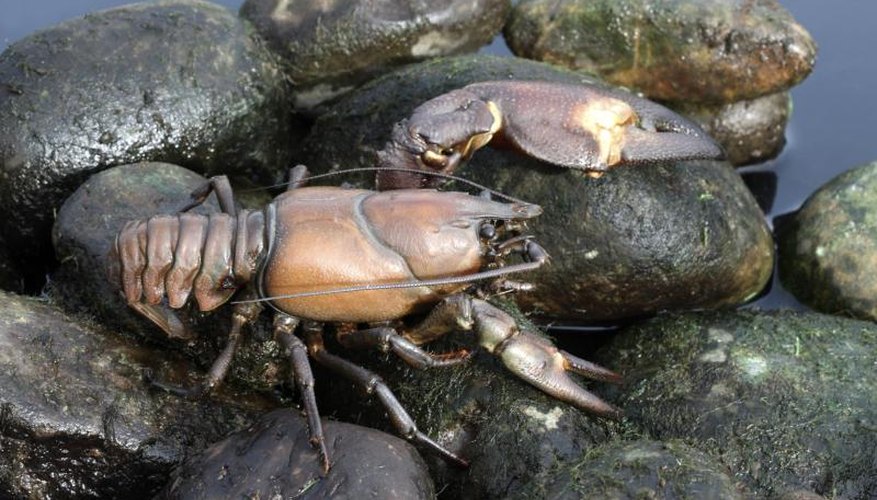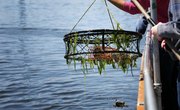
There are plenty of reasons to catch crayfish. They make excellent fishing bait for bass and steelhead, and crayfish don't just look like tiny lobsters -- they taste like them, too. Also known as crawfish, crawdads or mudbugs, crayfish inhabit lakes, rivers and streams all over Washington state, often growing to 6 inches or more. On a good day, you can catch them by the hundreds using natural baits.
Where and When
Most bodies of water in Washington support crayfish, so you shouldn't have to go far to find them. A handful of lakes have gained a reputation for having particularly abundant crayfish populations, including Lake Washington, Moses Lake, Pine Lake, Lake Samish and Clear Lake. Crayfish are available from spring through fall, with most of the largest individuals inhabiting areas between 15 and 30 feet deep. Rivers like the Columbia River and its tributaries are also excellent places to catch crayfish, particularly during and after the annual salmon runs, when crayfish feed heavily on the remains of salmon that have died in the river.
Crayfish Pots and Bait
The traps used to catch crayfish -- often called crayfish pots -- are similar to those used by lobster, crab and shrimp fishermen. Crayfish pots are typically made of wire mesh, and have funnel-shaped openings that make it easy for crayfish to enter, but difficult to leave. Baits used to lure crayfish into the traps vary greatly, and all sorts of animal products can be effective, including chicken gizzards, hot dogs and fish chunks. Speaking to the Seattle Times, Washington Department of Fish and Wildlife fish program manager Jon Anderson noted that crayfish often show a preference for oily fish like salmon. Some fishermen simply leave a punctured can of dog or cat food in the trap.
Setting and Checking the Traps
Crayfish feed most actively at night, and the most effective way to catch them is to bait your traps in the evening, leave them in the water overnight, and then check them the next morning. Crayfish inhabit the bottom of lakes and rivers, and they usually exist in the greatest numbers in areas with a mix of muddy bottom and rocky structure. Place the bait of your choice in the trap, close it securely, and lower it to the bottom on a line. Unlike shrimp and crab traps, there are no colored buoy requirements for crayfish traps in Washington, but using a marker buoy makes it considerably easier to find your traps again in deep water.
Know Before You Go
Recreational anglers can set up to two crayfish pots and keep up to 10 pounds of crayfish daily without a license. To set more pots, you must obtain a commercial fishing license from the Washington Department of Fish and Wildlife. Crayfish under 3.5 inches must be released. Crayfish are closed to fishing during winter to protect them during their mating season. Current season dates are available on the Fish and Wildlife website. The signal crayfish is the only native crayfish species in Washington, and is identifiable by its uniform brownish color, smooth shell and broad tail. A handful of other species, including the red swamp crayfish from Louisiana, have become invasive in many waters. There is no limit on how many non-native crayfish you can keep.
References
Writer Bio
When Richard Corrigan isn't writing about the outdoors, he's probably outside experiencing them firsthand. Since starting out as a writer in 2009, he has written for USA Today, the National Parks Foundation and LIVESTRONG.com, among many others, and enjoys combining his love of writing with his passion for hiking, biking, camping and fishing.



